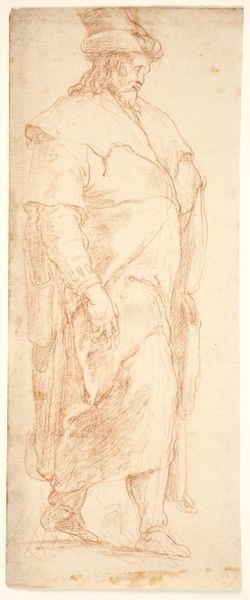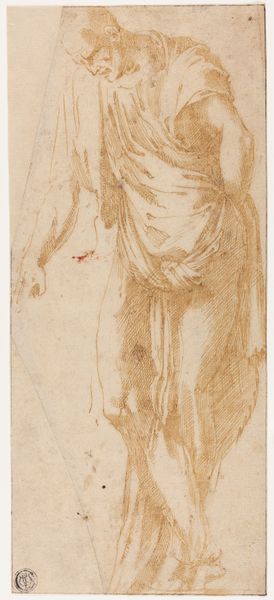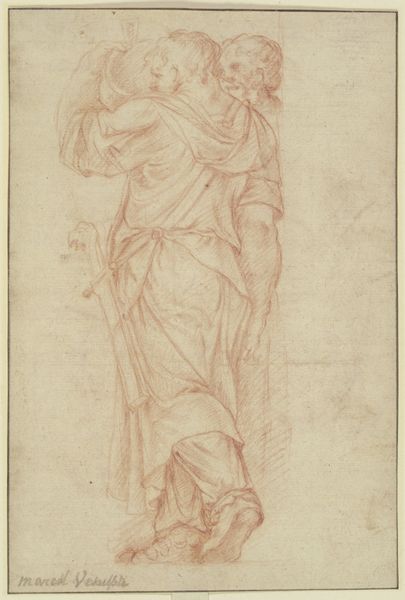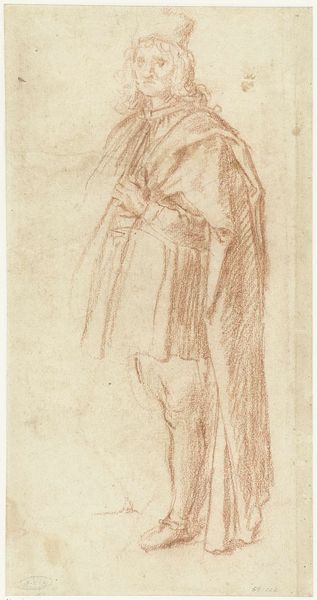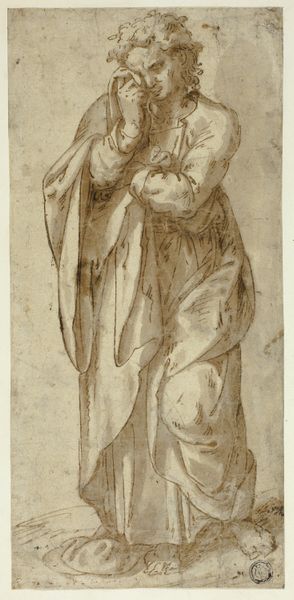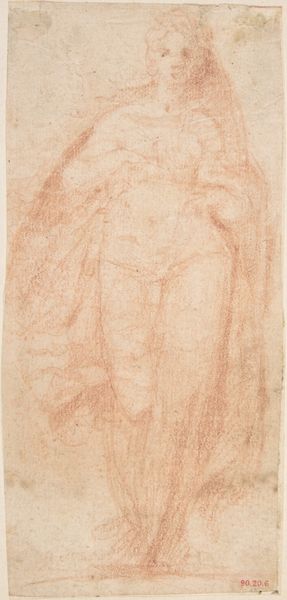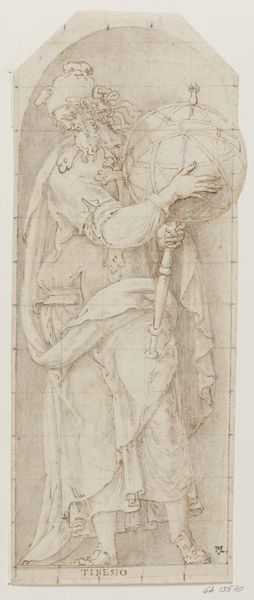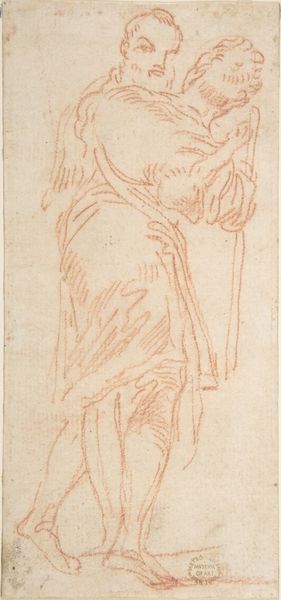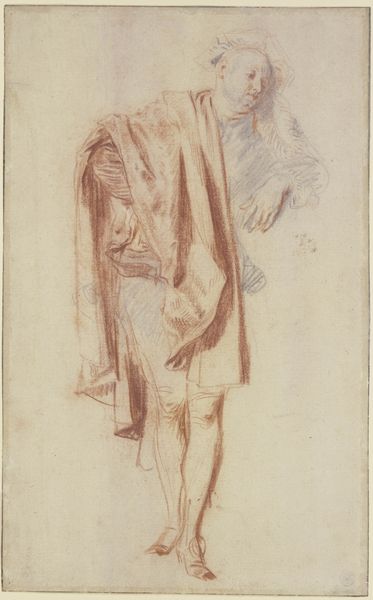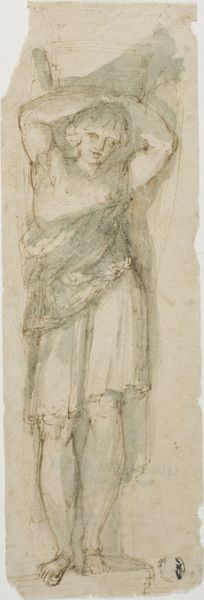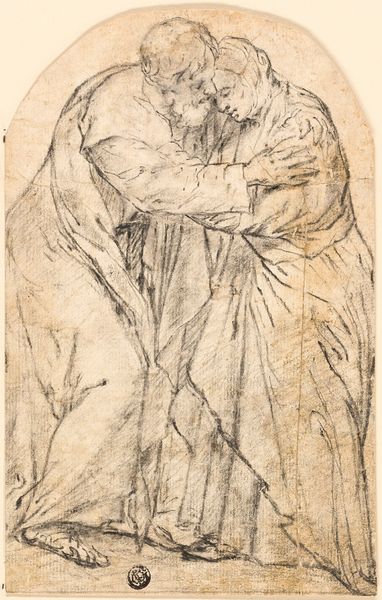
drawing, red-chalk, paper, pencil
#
portrait
#
drawing
#
red-chalk
#
figuration
#
paper
#
11_renaissance
#
pencil drawing
#
pencil
#
13_16th-century
#
italian-renaissance
Copyright: Public Domain
Curator: Look at this striking red-chalk drawing. It's by Francesco Vanni, titled *Zwei stehende männliche Figuren nach rechts*, which translates to "Two Standing Male Figures Facing Right." It resides here with us at the Städel Museum. Editor: Wow, there’s such a vulnerability to them. They feel… caught. Almost like figures in a play, waiting for their cue, perhaps uncertain of what comes next. The red chalk gives a warmth but also an urgency to their presence. Curator: Exactly! Red chalk was incredibly popular during the Renaissance, notably used by masters like Leonardo da Vinci. Vanni, an important painter of the late Renaissance and early Baroque in Siena, often utilized preparatory sketches such as these to plan out larger compositions. This allows us a rare glimpse into the artist’s creative process. Editor: It's fascinating to consider it as a step in something bigger. Does it perhaps betray something essential about art's own coming-into-being? Like watching actors rehearse—you're seeing them create, but without the artifice, just exposed intention and process. It's beautiful. Curator: I completely agree. You see the fluidity of his thinking. The poses are studies in contrapposto, that classic Renaissance interest in weight and balance. He’s clearly thinking through not just anatomy, but the relationship between these figures—one almost shielding the other, or supporting them, we're left to our interpretation. Editor: There’s definitely an intimate dialogue suggested through posture and proximity alone. Also, something raw in the hasty application of line, which yet captures subtle tonal changes. Curator: These kinds of drawings were also, in some ways, about building an image of ideal masculinity at the time. You’ll notice the musculature, the thoughtful expressions, but they never feel overly heroic. Editor: That's true. I sense a humanity that defies mere idealization. An exploration, maybe even empathy, and that draws me closer than a finished, polished piece might. It's that rawness, seeing it at that stage. Curator: It is a really immediate image—and gives insight into how artists approached constructing narratives and emotion during the Renaissance. Editor: Absolutely, getting so up close with an unfinished idea of art also provides such insight to that art and time. Curator: Agreed. It's a privileged view into Vanni's studio practice and creative choices of the period. Editor: A rare glimpse, indeed. I see them almost blinking there as if they're being roused from their centuries-long chalk sleep.
Comments
No comments
Be the first to comment and join the conversation on the ultimate creative platform.
